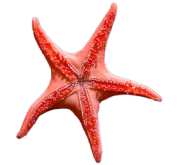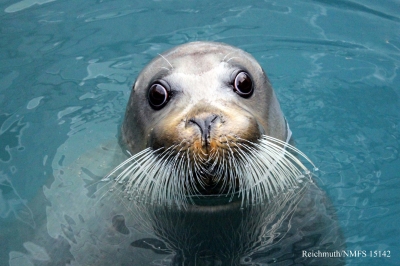Rare Opportunity to View Bearded Seal at the Alaska SeaLife Center March 17, 2015
Seward, Alaska (December 11, 2014) - The Alaska SeaLife Center (ASLC) is excited to announce it is currently home to a male bearded seal.
Siku, named after the Inuit word for “sea ice,” is the first of his kind to reside at the Alaska SeaLife Center – in fact the first bearded seal to reside in a North American facility.
Visitors to the Center can observe Siku during daylight hours from the viewing windows next to the Discovery Touch Pool now until the end of January 2015. Siku will then be transferred to the University of California, Santa Cruz, Long Marine Laboratory to participate in a long-term study on the hearing sensitivity of arctic seals.
Researchers at Long Marine Lab are examining the cognitive and sensory systems of marine mammals above and below the water’s surface. Siku will join a project studying the hearing perception of three arctic seal species: spotted, ringed, and bearded seals.

Photo courtesy of Taylor Paul
Little data exists about the auditory systems of these three species. In particular, there is currently no information on the hearing capabilities of bearded seals. The psychoacoustic study of these species will provide researchers basic information about their auditory system and how common industry noise from oil and gas exploration may affect their hearing.
“We are working cooperatively with spotted, ringed, and bearded seals to learn more about how these unique animals perceive the world around them,” UC Santa Cruz Associate Research Scientist Dr. Colleen Reichmuth said. “This project will teach us about the sensory biology of ice-living seals, and will inform best management practices for these species in areas increasingly influenced by human activity.”Approval for the project was granted by the National Marine Fisheries Service and the Ice Seal Commission, which work together to co-manage Alaskan ice seal populations.

“We are honored to partner with UC Santa Cruz in this important research project, and we are thrilled to have the opportunity to work with this particular species,” Alaska SeaLife Center President and CEO Dr. Tara Riemer said. “No facility in North America has ever been home to a bearded seal, and we are excited that Alaskans have this opportunity to see such a special animal.”
About the ASLC
Opened in 1998, the Alaska SeaLife Center operates as a private, non-profit research institution and public aquarium, with wildlife response and education programs. It generates and shares scientific knowledge to promote understanding and stewardship of Alaska’s marine ecosystems. The ASLC is an accredited member of the Association of Zoos and Aquariums, and the Alliance of Marine Mammal Parks and Aquariums. To learn more, visit www.alaskasealife.org.
About the UC Santa Cruz Long Marine Lab
Long Marine Laboratory is world renowned for innovative research in marine mammal physiology and ecology, marine invertebrate ecology, and marine toxicology. Researchers and staff at the lab have developed specially designed tanks and equipment that are used for studying marine mammal diving physiology, bioacoustics, and cognition. Long Marine Lab and other facilities are located at the UC Santa Cruz Coastal Science Campus on a seaside bluff a short distance from the main campus. For more information about UC Santa Cruz, visit www.ucsc.edu.


